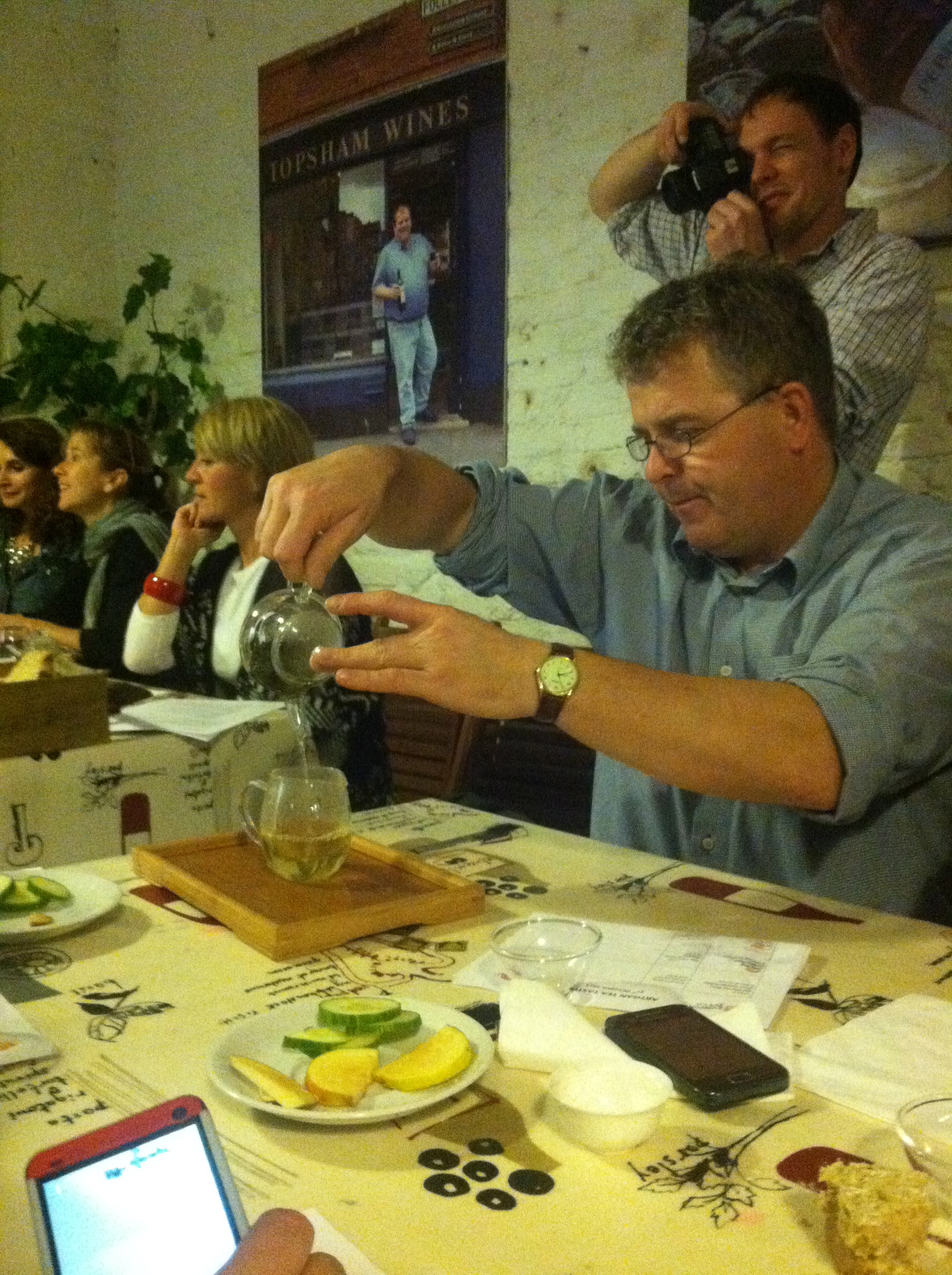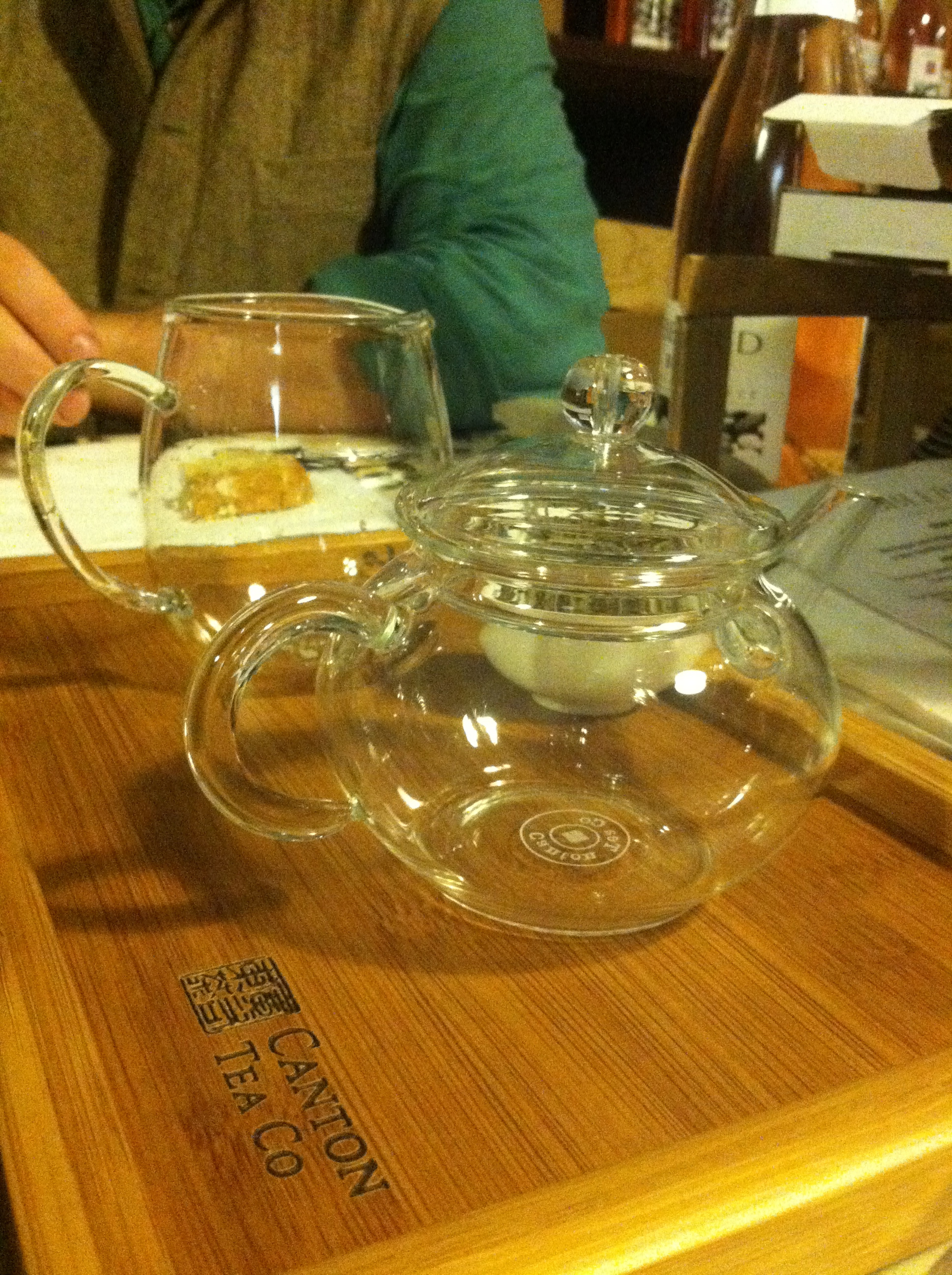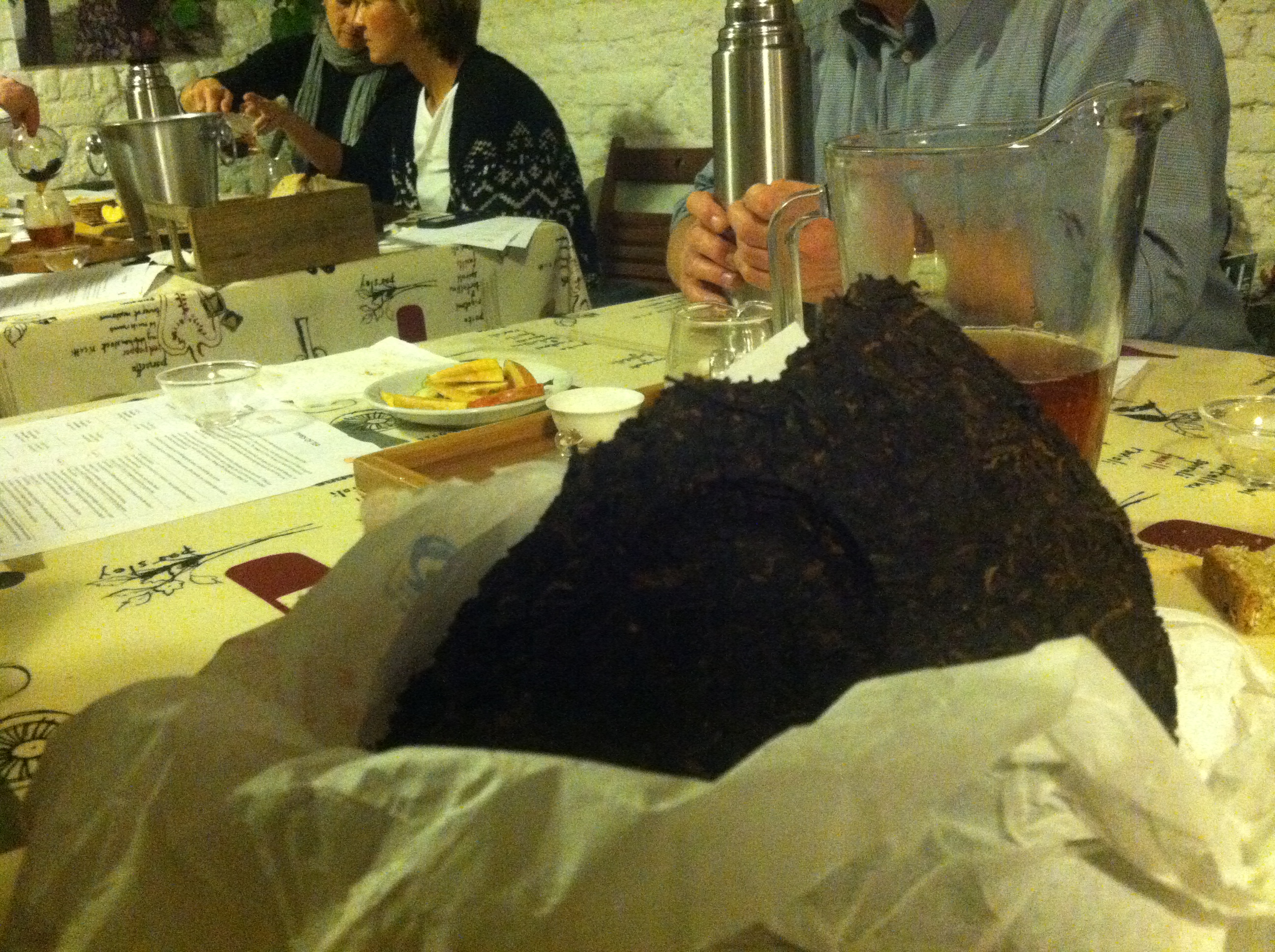Reading Tea Leaves
[This is one in a series of blog posts written by Charlotte the Intern. Tune in daily to find out about what she’s been up to, what she has been learning about, and all of the crazy things she does as part of the Manna from Devon team.]
When you study at a gastronomic university, tasting courses are a big part of the curriculum, both in the classroom and on our many visits to producers, so I’ve done quite a few different types of tastings over the past year. We’ve done beer, coffee, honey, and cured meats. We did olive oil and wine. We even did capers! But we never did tea, so I was excited tonight to go a tea tasting hosted by Slow Food Devon and Phil Mumby, an expert in all things tea and self-titled Tea Hunter, which is just about the coolest job title I’ve ever heard of. (I’m envisioning him as the Indiana Jones of the tea world).
Phil led us on a tasting of 6 different teas which would blow your average Builder’s out of the water, starting with white tea and moving through oolong, green, lapsang, black, and pu erh. Phil explained a bit about the production methods of each and how the tea should be brewed to maximize flavor, including as much anecdotal information as technical. It was incredible to me how different each tea was, from how the dry leaves looked, to their flavors and aromas, to the way they each changed with more and more infusions. None of us had any past experience with the nuances of tasting teas, but by the time we got to the end of the tasting we were making the bold proclamations of newly self-certified tea experts. “The third infusion of the lapsang was really the pinnacle of flavor for me.” Things like that.
All joking aside, it was amazing how much the flavor profiles of each tea reminded me of other tastings I had done, particularly of beer and whiskey. I suppose it’s not altogether surprising; one of the fundamental courses that we do as part of our degree is called “Molecular Basis of Taste,” in which we learn about all of the different flavor compounds and the seemingly disparate places in which we can find overlapping flavor qualities. It is amazing how much subtlety you can detect when you truly pay attention to the things you are eating and drinking, which is something that we miss out on all too often (myself included). And it also goes to show that although every type of product has unique characteristics, you really need only to learn one type of tasting vocabulary in order to talk about foods as different from one another as chocolate is from and cheese.
It was a great evening, and I loved being able to learn about something that I really know nothing about beyond the fact that I like my daily cuppa with milk and one sugar. Big thanks to Slow Food Devon for giving us a little intro to the fascinating world of tea!

Phil created a hands-on tasting, asking us to prepare the tea socially, as is the custom in so many tea-drinking regions.




